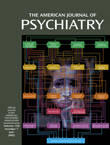Does the Definition of Borders of the Planum Temporale Influence the Results in Schizophrenia?
Abstract
OBJECTIVE: The planum temporale, a highly asymmetric neocortical area of the temporal lobe, has a possible role in schizophrenia. The authors used three different anatomical definitions of the planum temporale to examine the anterior, posterior, and total planum temporale gray matter volumes simultaneously. METHOD: Magnetic resonance imaging was used to examine 30 male schizophrenic patients and 30 healthy male comparison subjects. The total planum temporale was identical in all three anatomical definitions applied to determine the border between the anterior and posterior planum temporale regions. RESULTS: No significant differences between men with and without schizophrenia were detected with regard to planum temporale volumes and asymmetry coefficients for any of the three definitions. CONCLUSIONS: The authors could not prove the hypothesis that the definition of planum temporale borders influences the results concerning possible disturbances of planum temporale asymmetry in patients with schizophrenia.



